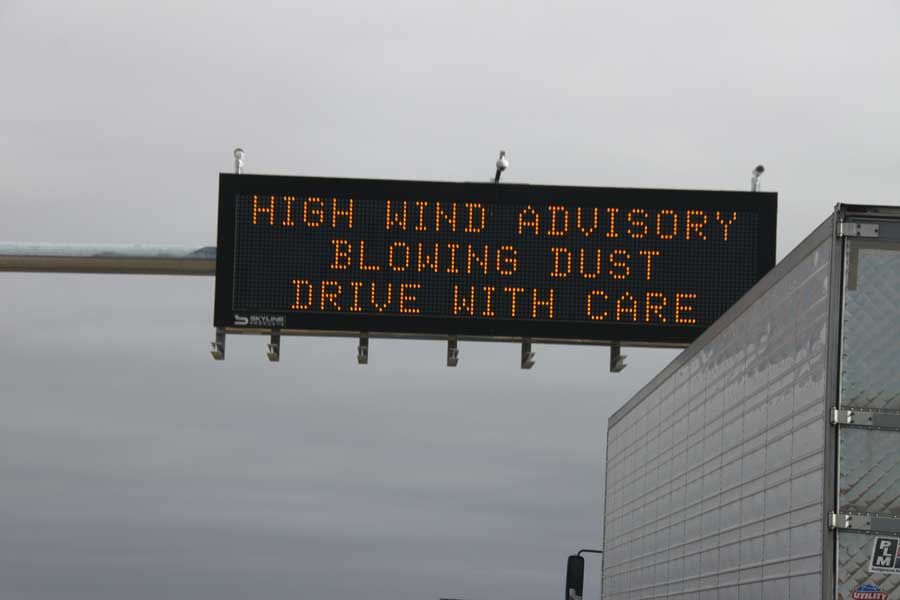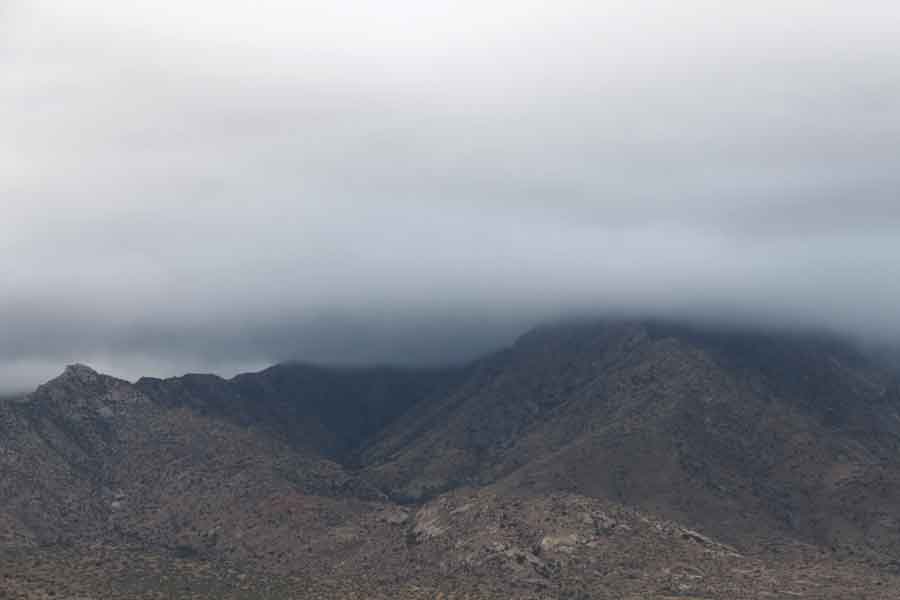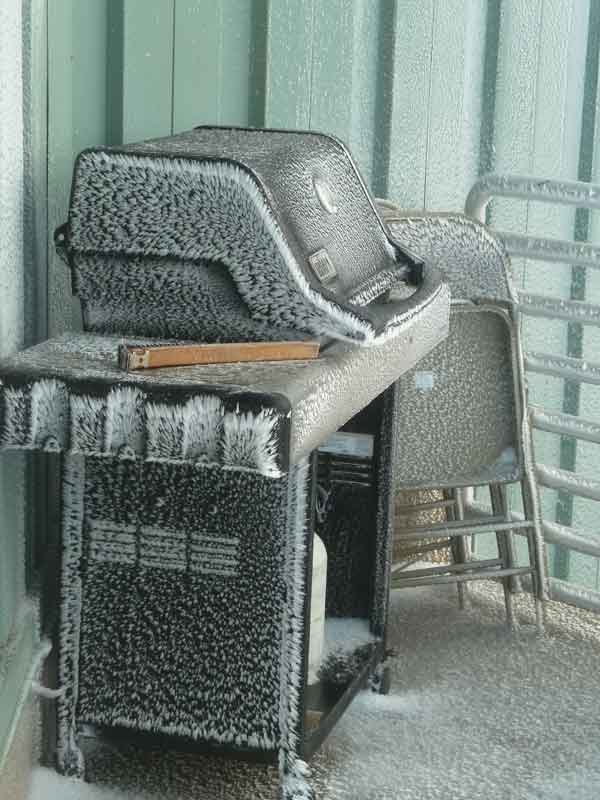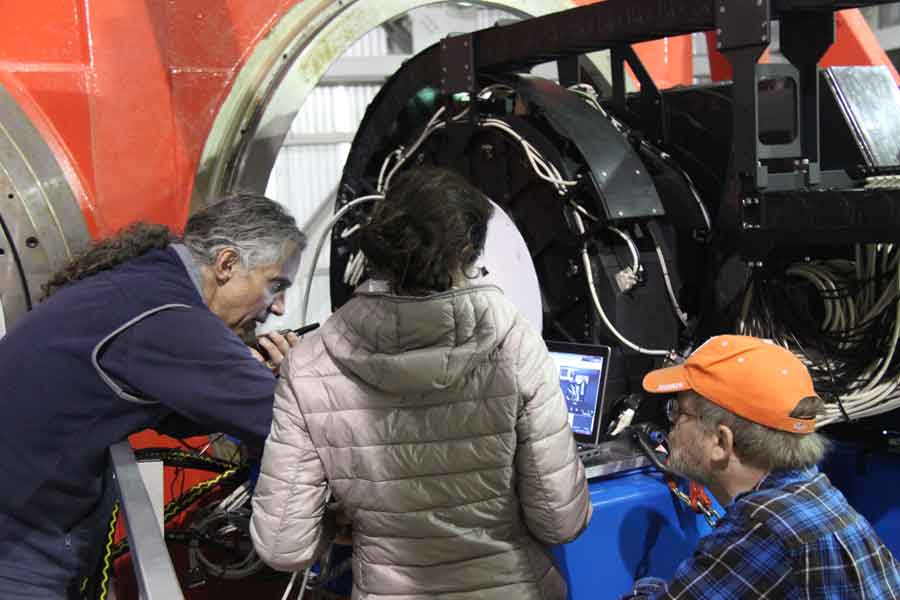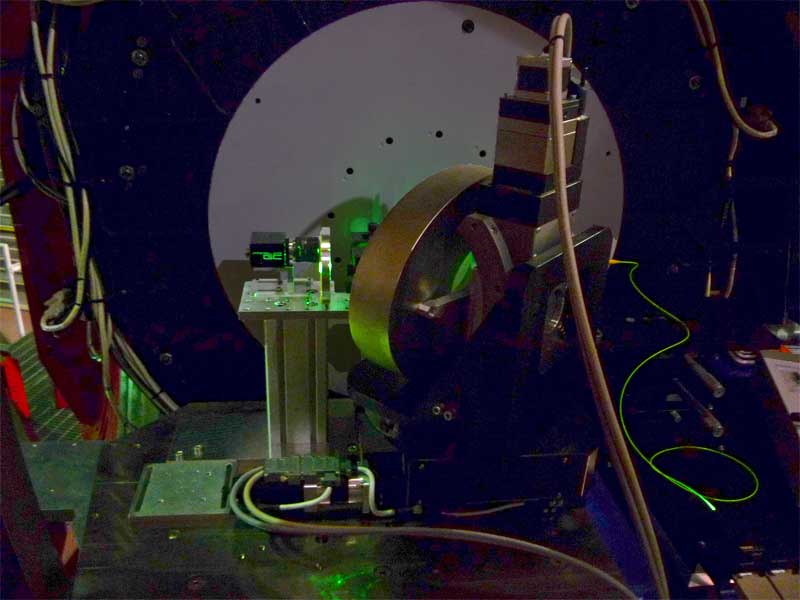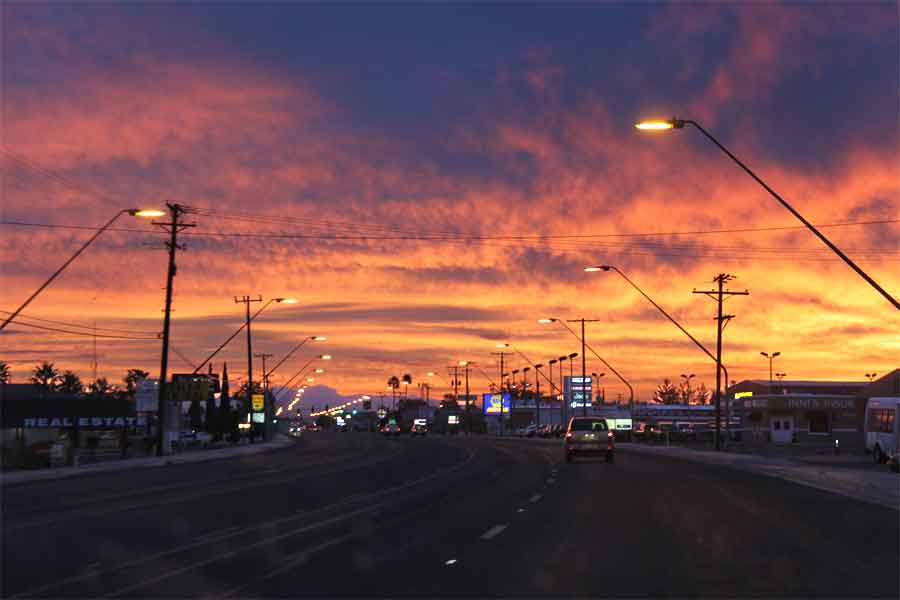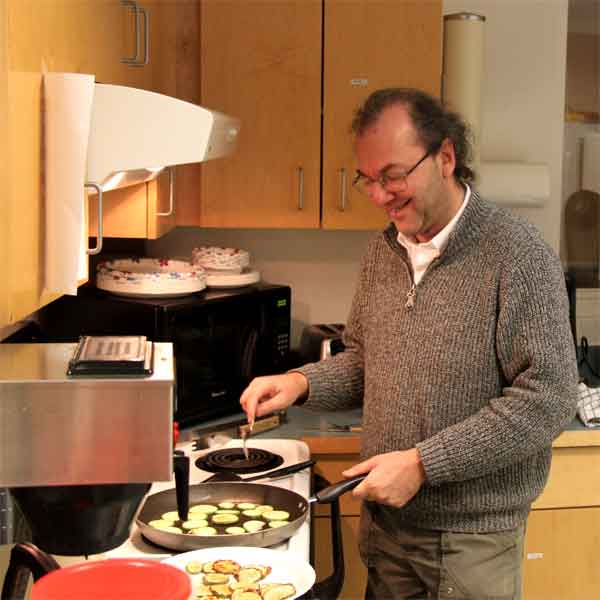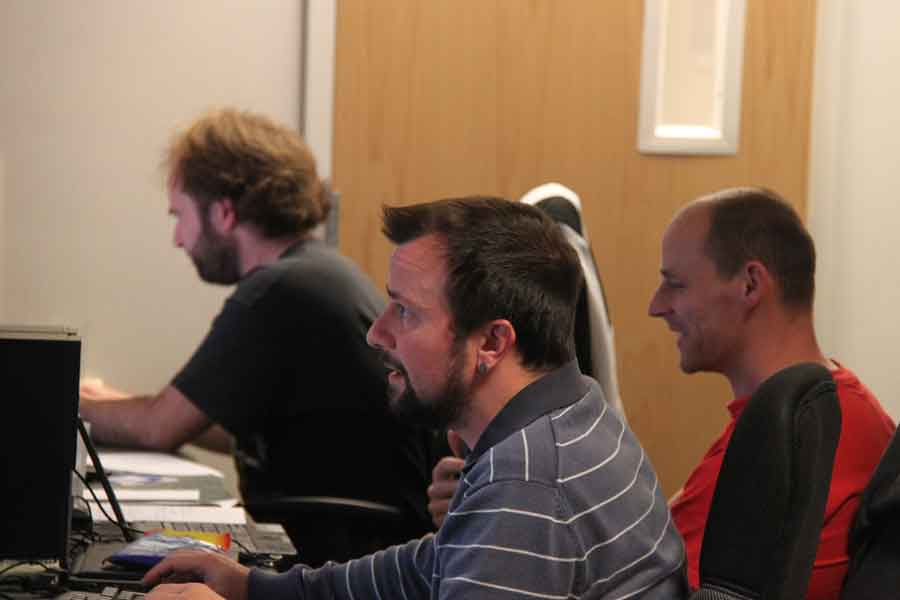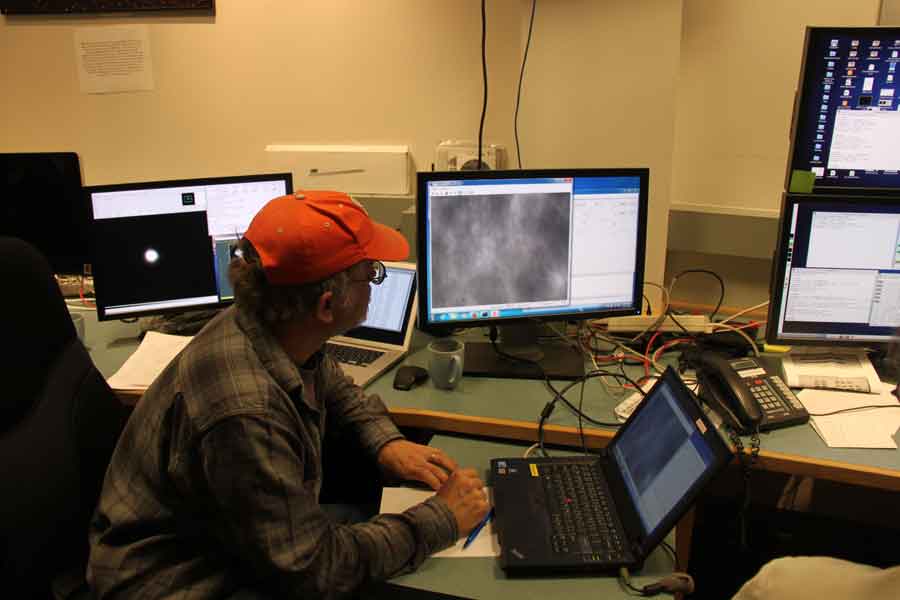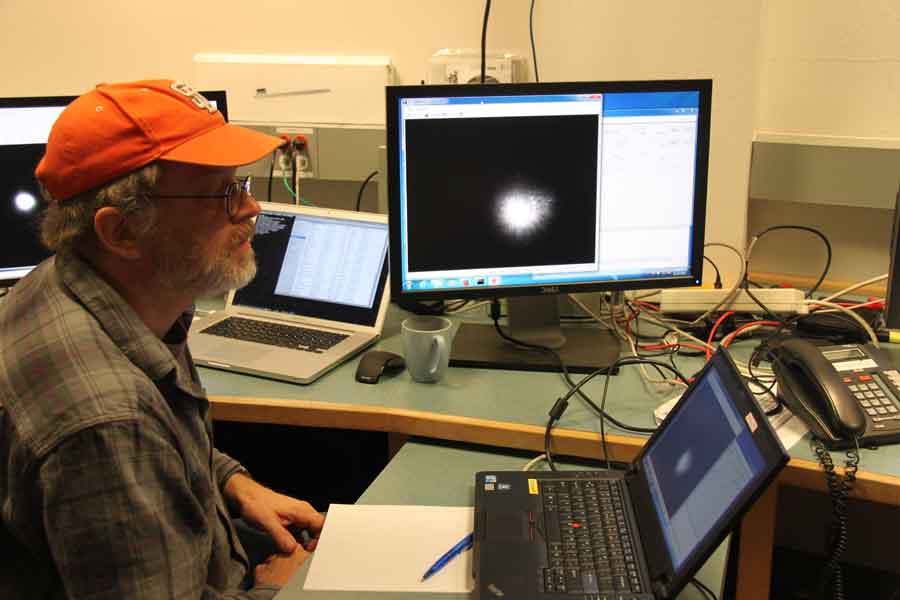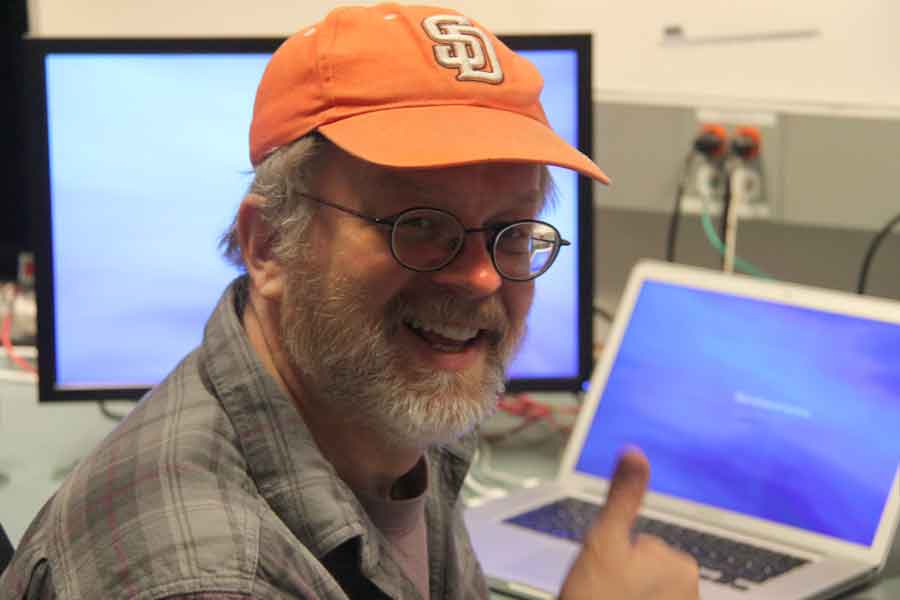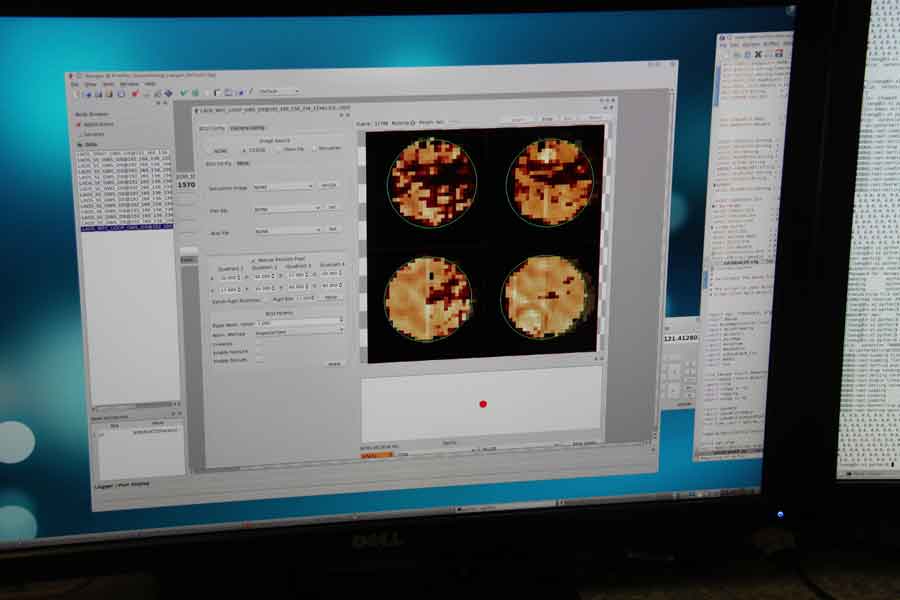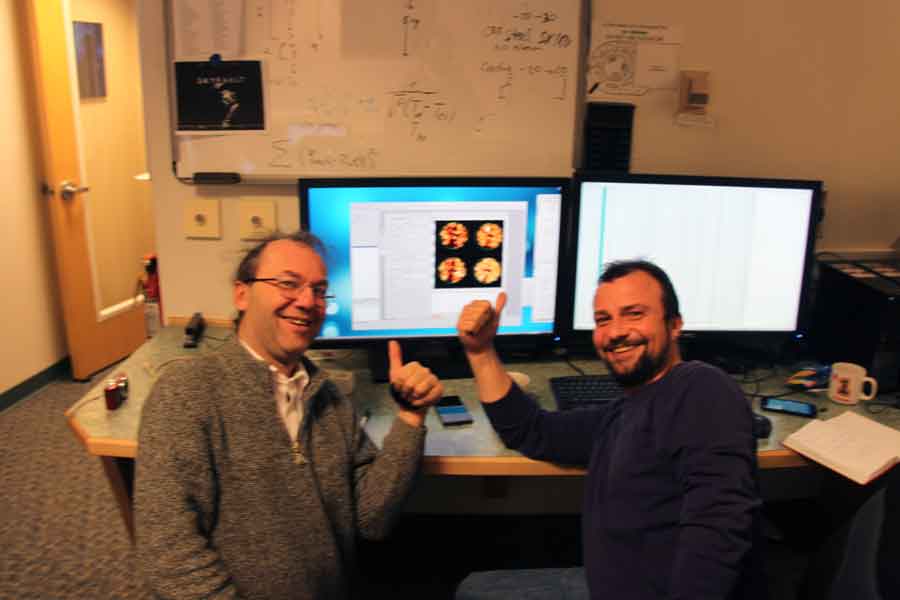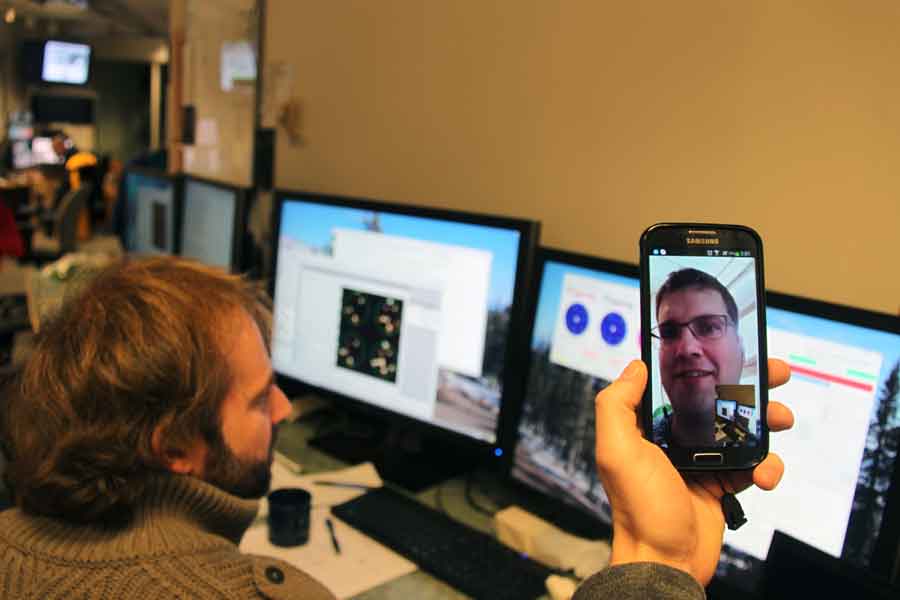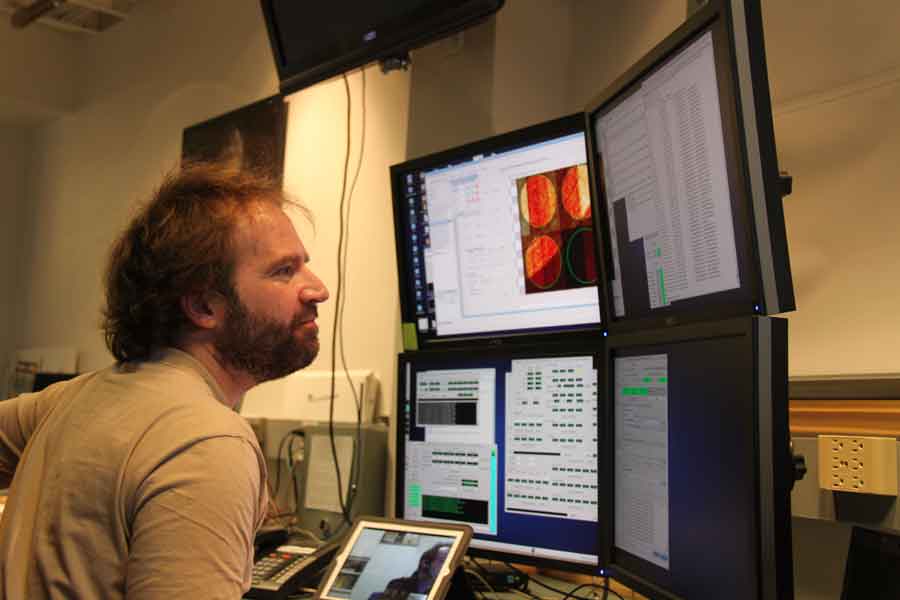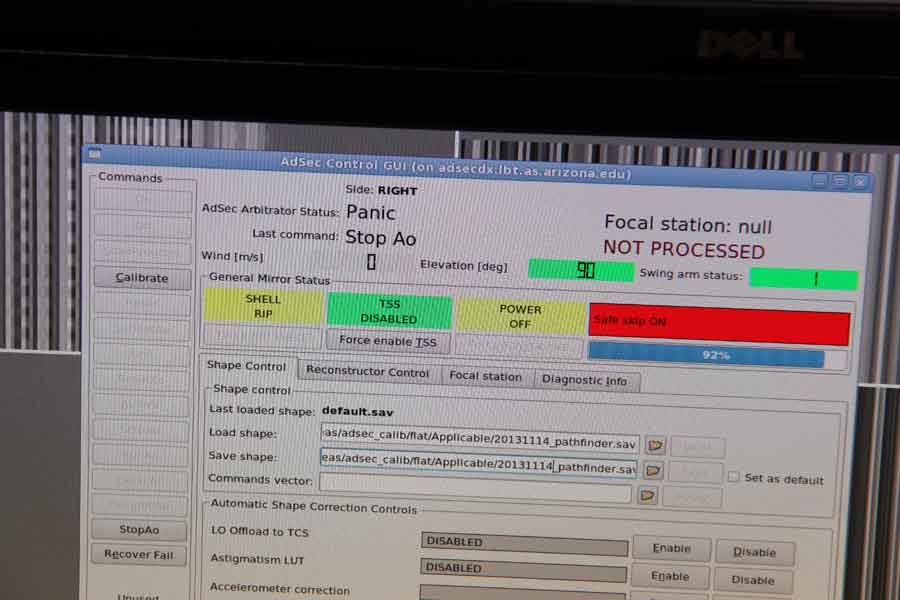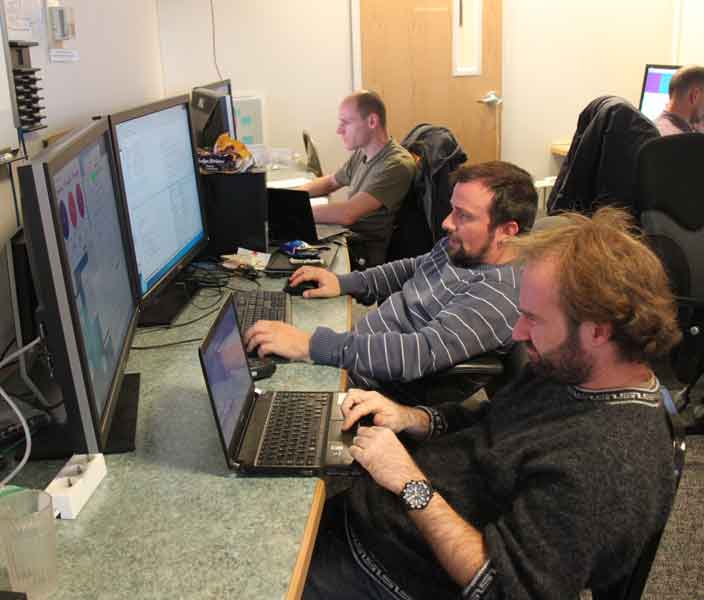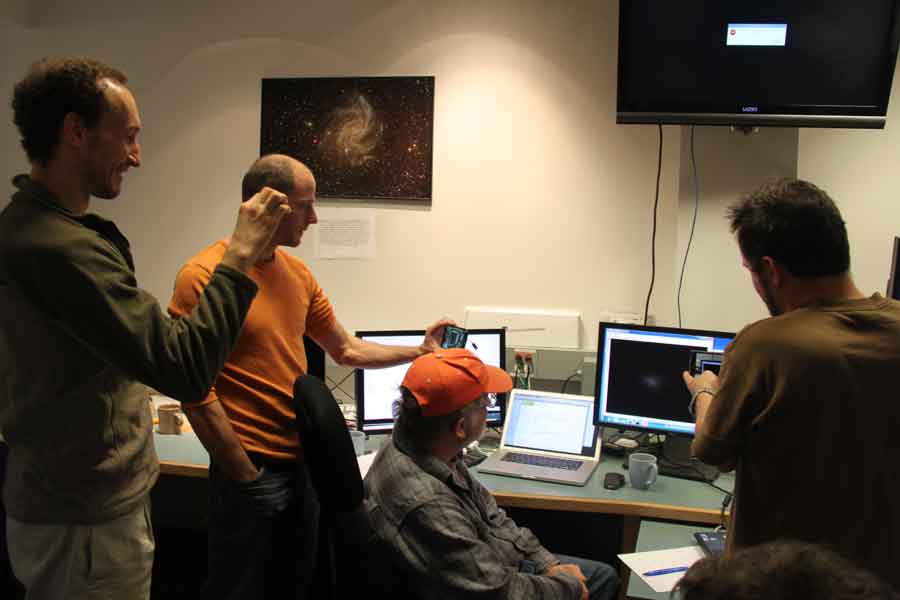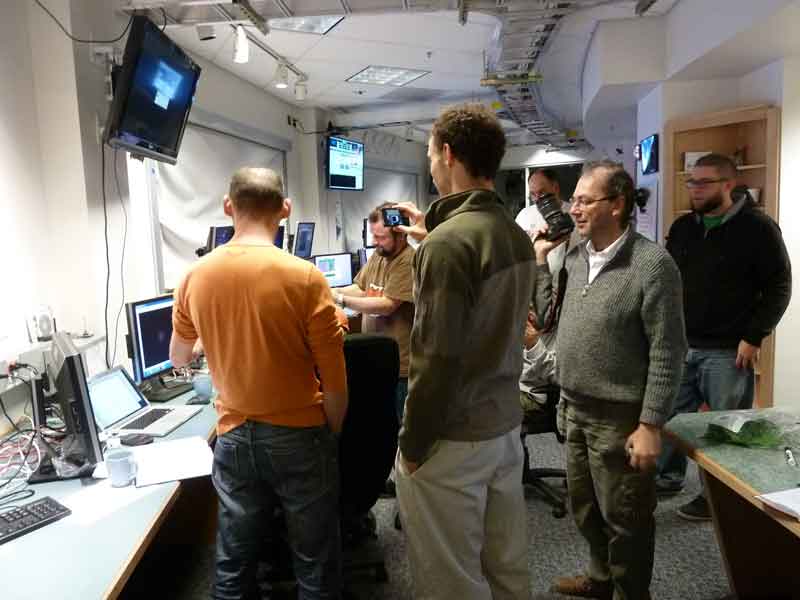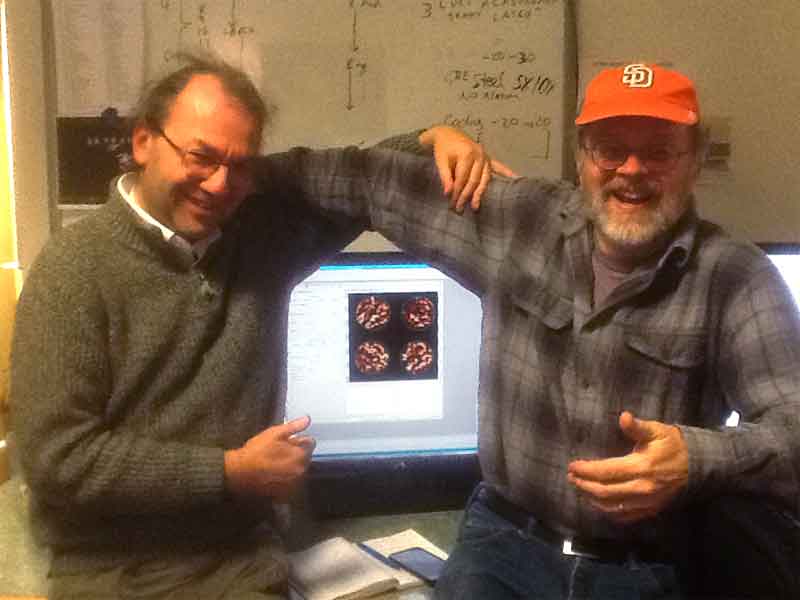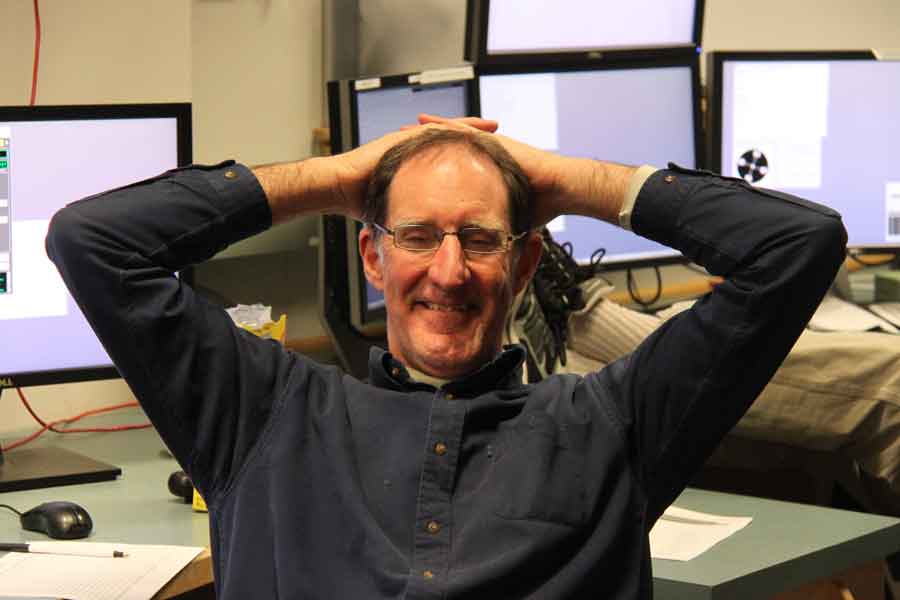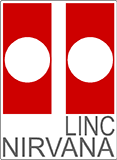Pathfinder First Light! – November 2013
The Pathfinder team returned to the LBT in November, with the goal of calibrating the instrument for adaptive optics during the daytime campaign, and attempting to close the loop during the night.
The daytime calibrations involved measuring the so-called interaction matrix, a mapping between shapes applied to the adaptive secondary mirror and the measured signals on the wavefront sensor. To do this, the team installed a fiber light source and used the LBT retro-reflector to send light from the secondary mirror into the wavefront sensor. The team had previously used the retro-reflector for alignment during T4 (see here).
The nighttime activities began with trying to get starlight into Pathfinder. Because we are operating at an unconventional location on an uncommissioned focal station, we chose a zeroth magnitude star (Capella). After a short spiral search, we were rewarded with Pathfinder first light (see images below).
The next activity focused on performing adaptive optics (AO). At 2:20 in the morning on 16 November Arizona time, we closed the LINC-NIRVANA Pathfinder AO loop for the first time on Epsilon Auriga. We had been waiting for almost two days for the skies to clear and the wind to die down. Thanks to a bit of luck and a lot of preparation, we managed to close the loop less than an hour after opening the dome and 35 minutes after Pathfinder saw its first sky photon.
We initially closed the loop using 10 Zernike modes. Ten minutes later, we closed the loop with 50 modes. The snapshots below show the open loop and closed loop "first loop" images. The frames are approximately five arcseconds across. Note that these images were taken at visible wavelengths (where AO does not work well) and in 2.3 arcsecond seeing (which is pretty bad). Later in the night, we had a short window of ~2 arcsec seeing during which we closed the loop on HR3275 (you can see a mobile phone video of this here).
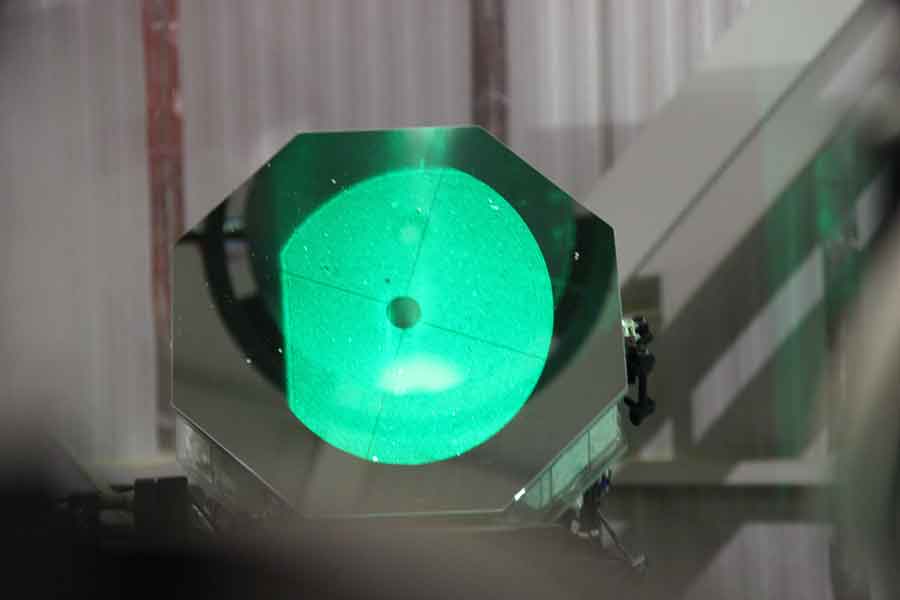
The Pathfinder alignment laser on the tertiary mirror.
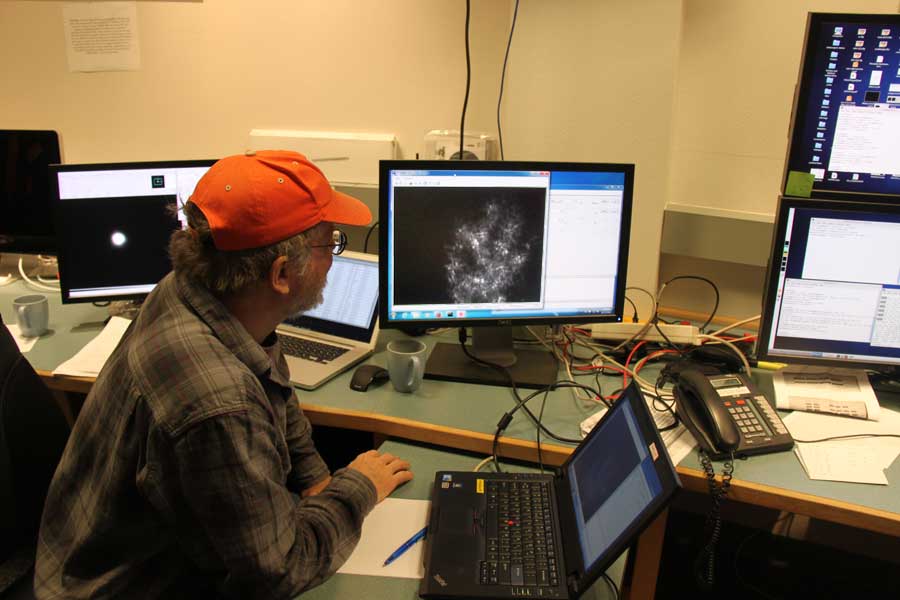
Pathfinder very first light was a rather poor image of Capella.
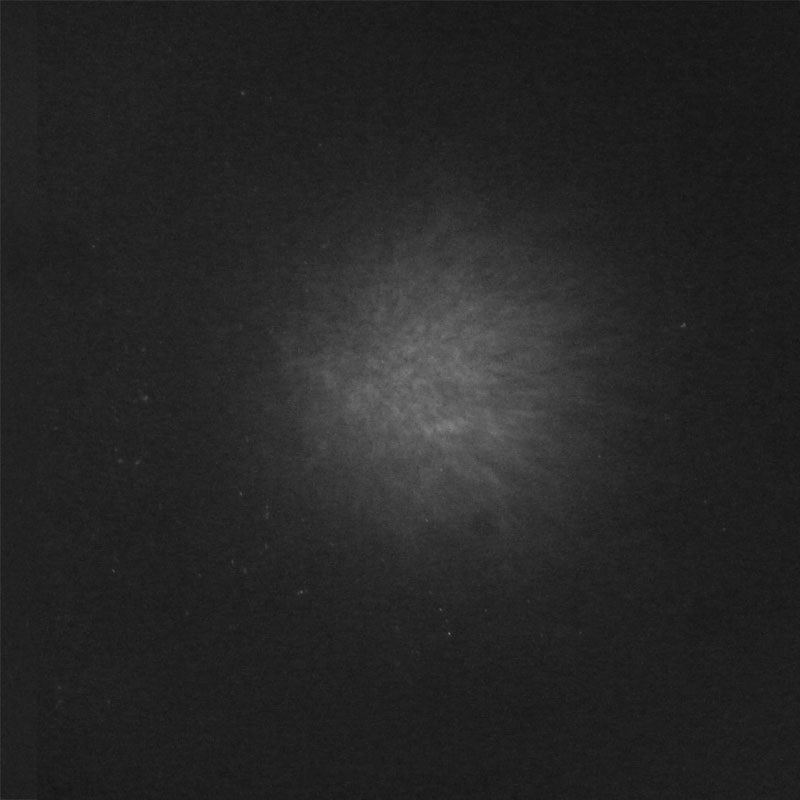
Open loop image of epsilon Auriga at visible wavelengths. The field is approximately five arcseconds square.
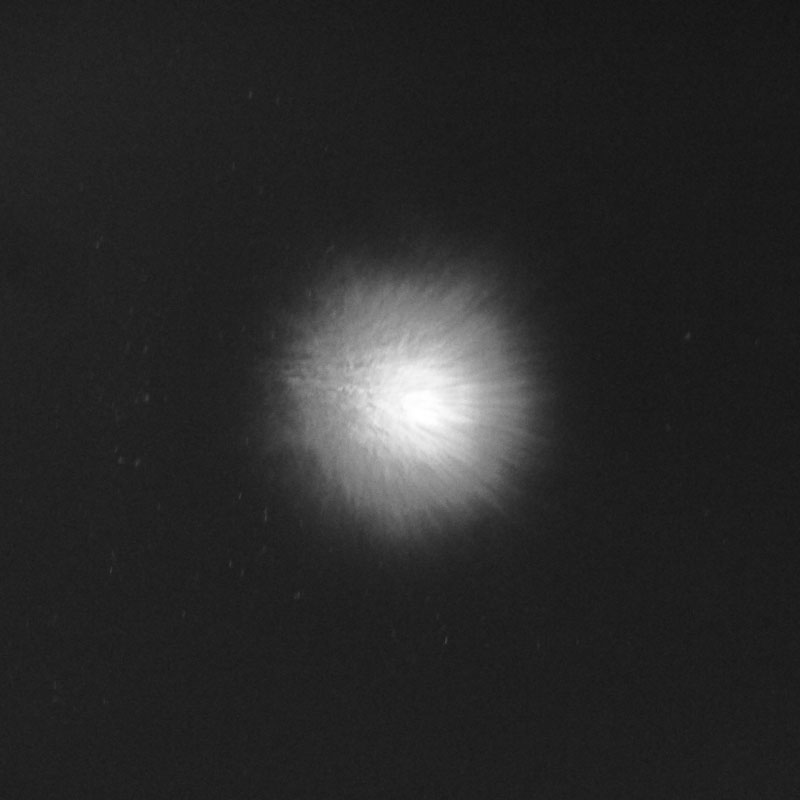
First closed loop on epsilon Auriga with 50 Zernike modes.
Pathfinder closing the loop on the star HR3275. Note that we were not expecting to succeed so quickly, and hence the only record of the event is from a cellphone camera.
Pathfinder First Light Slide Show
Click the forward and back arrows to see a slideshow of the Pathfinder First Light campaign (T5). There are 21 slides total.
